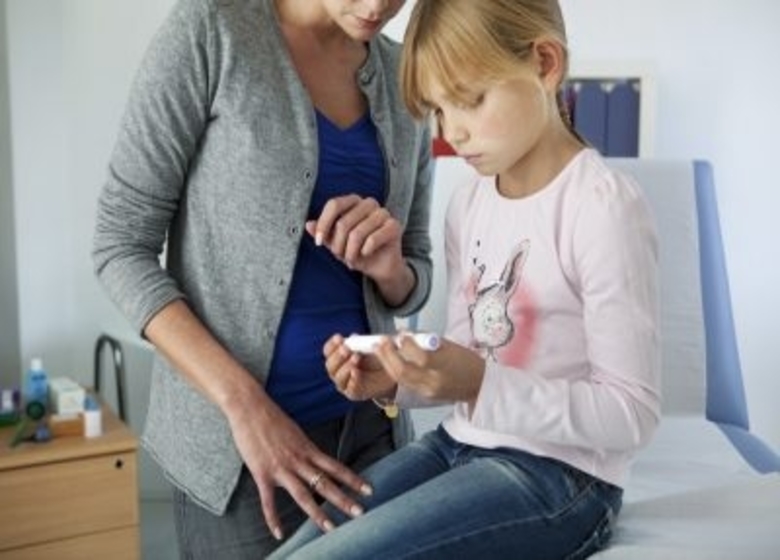Diabetes In Young Children
Diabetes is rare in children under 5, but if young children develop diabetes it is very serious. Here is how to spot the symptoms of diabetes and manage the condition.
What is diabetes?
Diabetes is a potentially life-threatening condition which leads to high levels of glucose (sugar) in the blood. Glucose is controlled by the hormone insulin, which is produced by the pancreas. Diabetes develops when the pancreas doesn’t work properly, or when the body doesn’t use insulin properly.
There are different types of diabetes.
The most common in children is type 1 diabetes.
Type 1 and type 2 diabetes are different diseases, but they both affect the body’s use of insulin.
Type 1 diabetes in children, previously called juvenile diabetes, occurs when the pancreas is unable to produce insulin.
Without insulin, sugar cannot travel from the blood into the cells, and high blood sugar levels can result.
Type 1 diabetes is a lifelong condition that must be managed with regular injections of insulin.
Type 2 diabetes is more common in people over 40. It is less common in young children, but it can occur when insulin is not working properly. Without enough insulin, glucose can accumulate in the bloodstream.
Very rarely, babies are born with diabetes. This is called neonatal diabetes and is caused by a problem with the genes. Neonatal diabetes can disappear by the time the child is 12 months of age, but the diabetes usually returns later in life.
Symptoms
Some symptoms are common to both types of diabetes.
Type 1
The most common symptoms of type 1 diabetes among children and adolescents include:
- Increased thirst and urination
- Hunger
- Weight loss
- Fatigue
- Irritability
- Fruity smell on the breath
- Blurred vision
- Girls might develop a yeast infection
- Weight loss is often a common symptom before diagnosis.
Type 2
Symptoms of type 2 diabetes include:
- Urinating more often, especially at night
- Increased thirst
- Tiredness
- Unexplained weight loss
- Itching around the genitals, possibly with a yeast infection
- Slow healing of cuts or wounds
- Blurred vision (as the eye’s lens becomes dry)
Other signs of insulin resistance include:
- Dark, velvety patches of skin, called acanthosis nigricans
- Polystic ovarian syndrome (PCOS
Symptoms of type 1 diabetes in children tend to develop rapidly over a few weeks. Type 2 diabetes symptoms develop more slowly. It may take months or years to get a diagnosis.
Parents should take their child to the doctor if they notice any of the above symptoms.
Complications
Type 1 diabetes complications
One of the most serious consequences of undiagnosed type 1 diabetes is diabetic ketoacidosis (DKA).
Diabetic ketoacidosis (DKA)
If a child does not receive a diagnosis of type 1 diabetes, or more rarely, type 2, they can develop DKA.
DKA is the leading cause of mortality in children with type 1 diabetes.
If insulin levels are very low, the body cannot use glucose for energy. Instead, it begins to break down fat for energy.
This leads to the production of chemicals called ketones, which can be toxic at high levels. A build-up of these chemicals causes DKA, where the body becomes acidic.
Early diagnosis and effective management of diabetes can prevent DKA, but this is not always possible.
Type 2 diabetes complications
Uncontrolled type 2 diabetes appears to progress faster in young people than in adults.
Younger people also seem to have a higher chance of complications, such as kidney and eye disease, earlier in life than children with type 1 diabetes.
There is also a greater risk of high blood pressure and high cholesterol levels, which raise a person’s risk for blood vessel disease.
Type 2 diabetes in children nearly always occurs with obesity, which may contribute to these higher risks. Because of this, the early detection of type 2 diabetes and attention to managing overweight in younger people is crucial.
This may include encouraging children to follow a healthful diet and get plenty of exercise.
Remember that having diabetes can affect your child’s behavior. They may feel different from other children. Involve your child in their own care and teach them how to make good choices for their health. It’s also a good idea to introduce them to other children who have diabetes.
Make sure that glucose (a type of sugar found in many foods, including honey and fruit juices) is always available in case of hypoglycemia.













